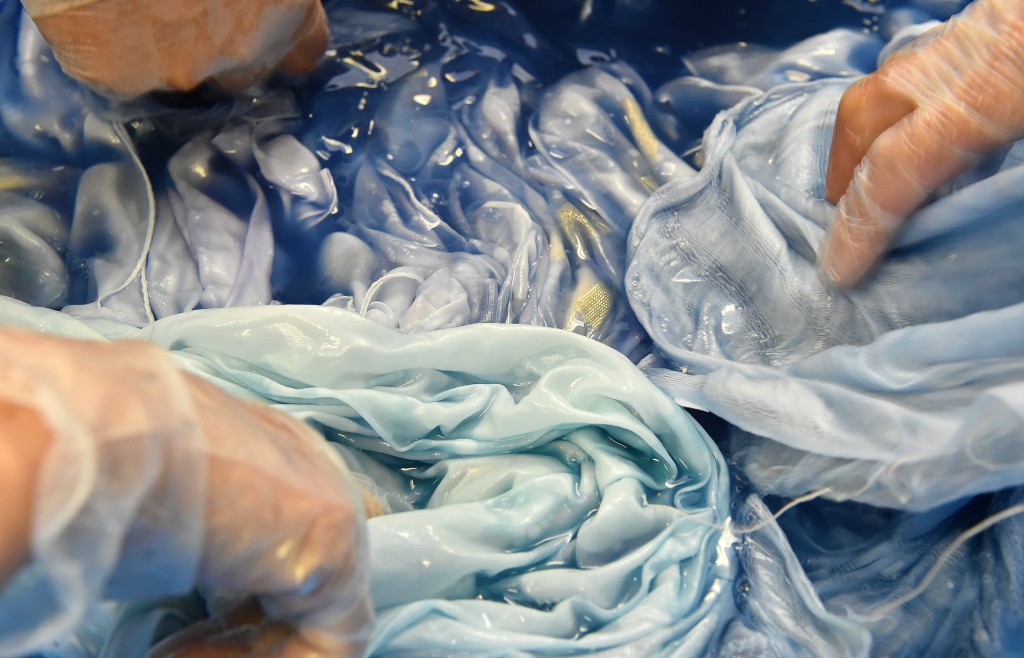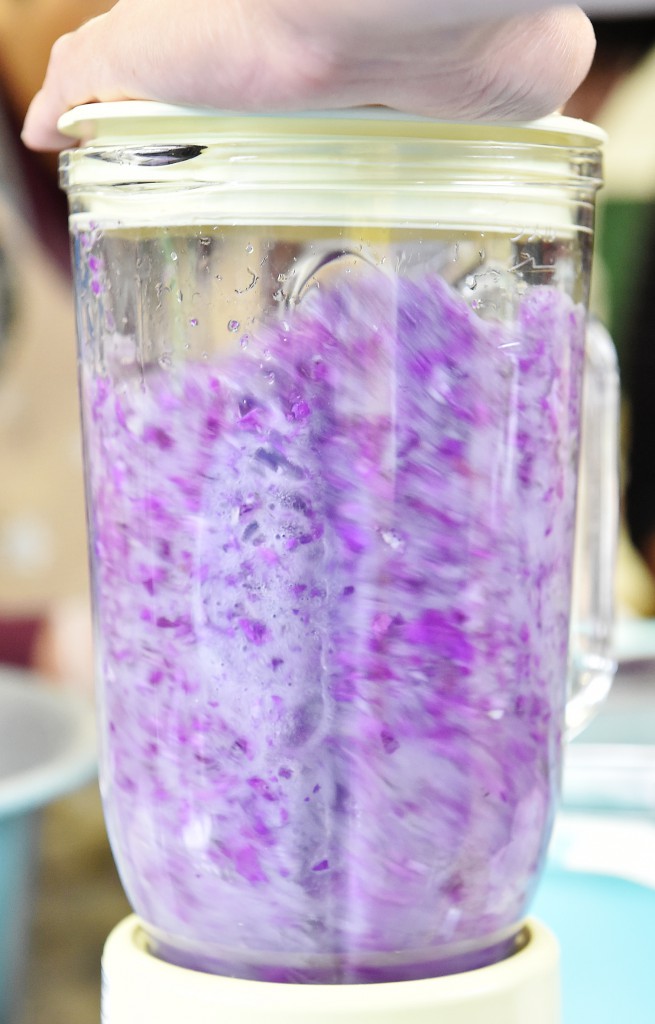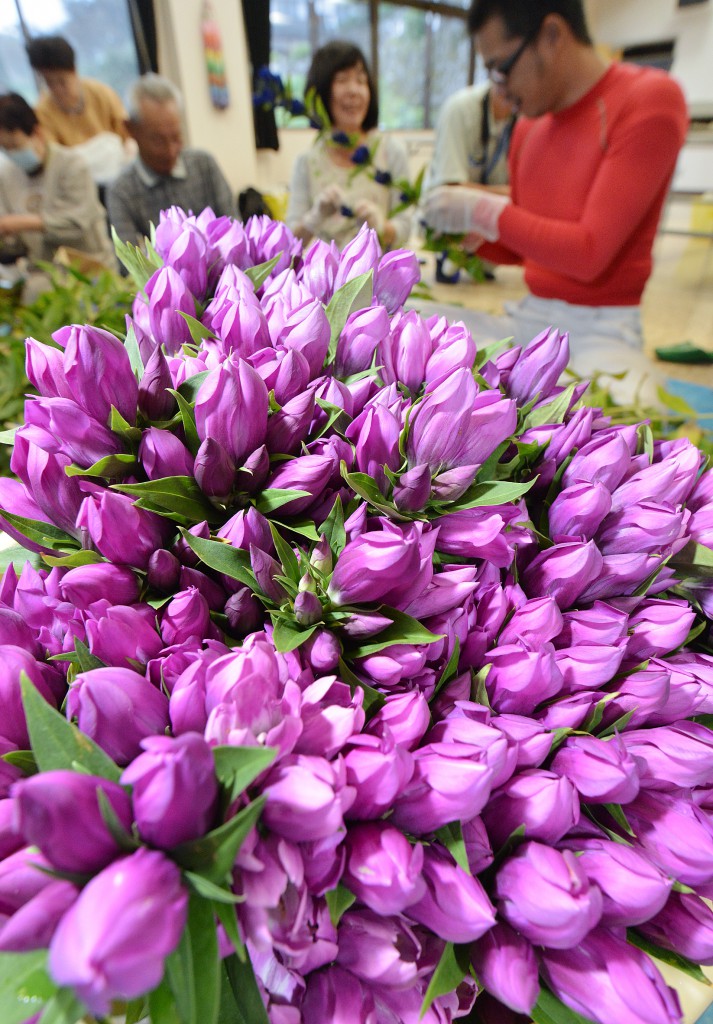
Petals are handpicked carefully in order to prevent pollens and leaves being mixed into them. The care is necessary to keep colors as clear as possible.
Kotaro Yamada
– Dyeing clothes using gentians (Niimi-shi, Okayama Prefecture) –

Members of Flowers and Ornamental Plants Division of JA Ashin checking colors of products, which turns out perfect in pale purple and pink.
Farmers in Niimi-shi, Okayama Prefecture, are trying to convey the charm of their local specialty, gentians, by making gentian-dyed clothes their new local attraction. They color clothes using unmarketable gentians so that people can enjoy their colors anytime, anywhere and forever.
The initiative was launched in 2012 by the Division of Flowers and Ornamental Plants of JA Ashin, an agricultural co-operative of Okayama Prefecture as a project to make use of unmarketable gentians, due to badly-shaped stems for example, particularly in pale purple and pink.
The method they introduced is not something special. You put handpicked gentian petals into a blender and process until coarsely chopped. Next you put the chopped petals in a net and squeeze well to get the juice with beautiful colors. The juice can be then used to dye clothes by soaking them for a while and drying.
 You can get different color densities and tones depending on types of the clothes you choose. The Division of Flowers and Ornamental Plants of JA Ashin holds workshops for both members and visitors so that many can experience and learn the process and enjoy making their original scarfs and stoles.
You can get different color densities and tones depending on types of the clothes you choose. The Division of Flowers and Ornamental Plants of JA Ashin holds workshops for both members and visitors so that many can experience and learn the process and enjoy making their original scarfs and stoles.
Niimi-shi is located high above sea level and cool in summer. In 2001, many local farmers started to grow the alpine flora as substitute plants to give their idled rice paddy fields a chance to work again. Currently 30 member farmers produce and deliver cut gentian flowers throughout the months of June until November, making the city one of the leading suppliers of the gentians in the western Japan area.
The gentian growers have introduced the naturally dyed clothes and products in order to boost their relatively young business even further. The division members displays the products made of the dyed materials at a local farmers’ market, decorating their stand with real flowers of gentians.
Chairman of the Division of Flowers and Ornamental Plants, Shigeaki Tanabe, 81, enthusiastically said, “The best part of gentians is their brilliant colors. The gentian-dyed clothes will hopefully help us reach out to new customers all over Japan.”

Clothes are soaked into juice extracted from gentian petals. Colors of products may differ depending on types of materials.

Niimi-shi has gentian fields of about 40,000 square meters in total. Its cold weather is suitable for growing gentians.
(Oct. 12, 2014)



